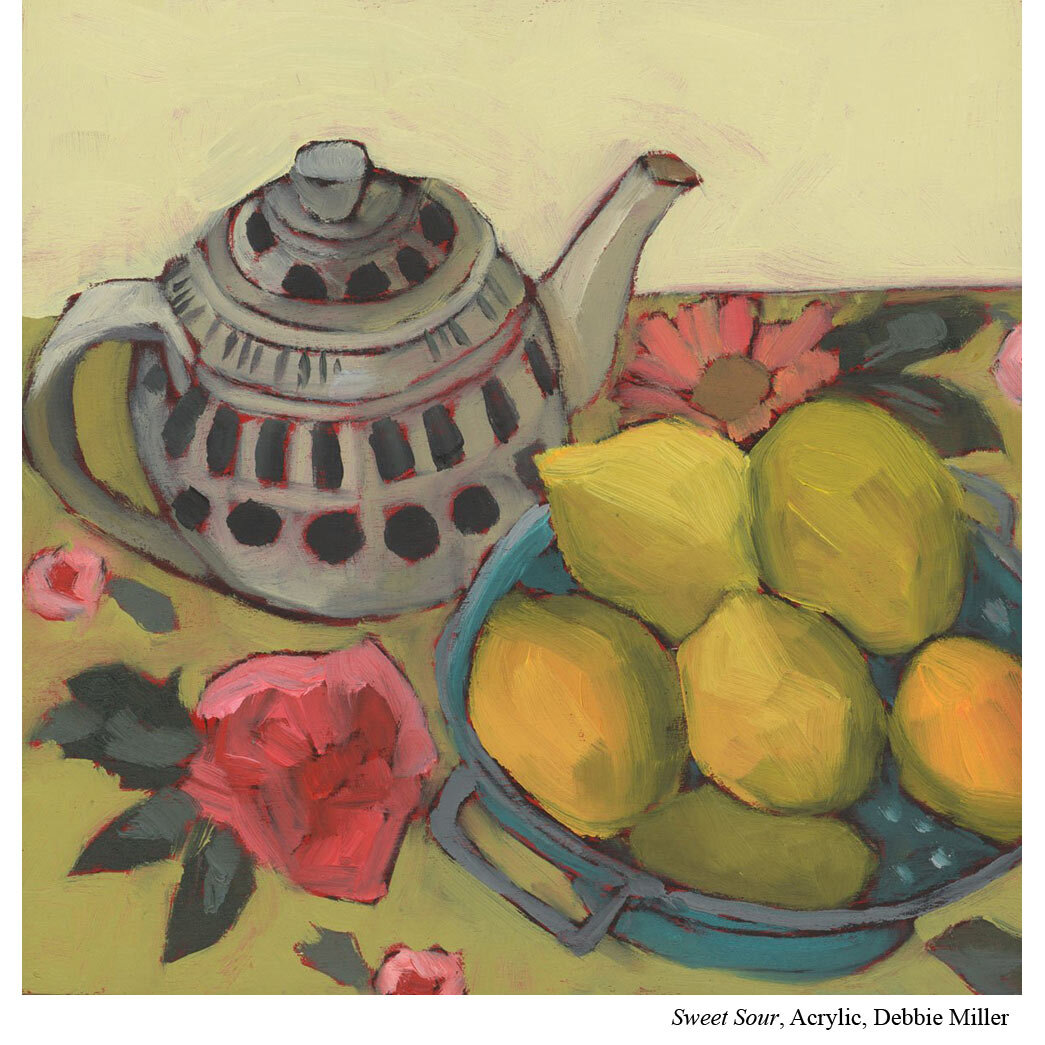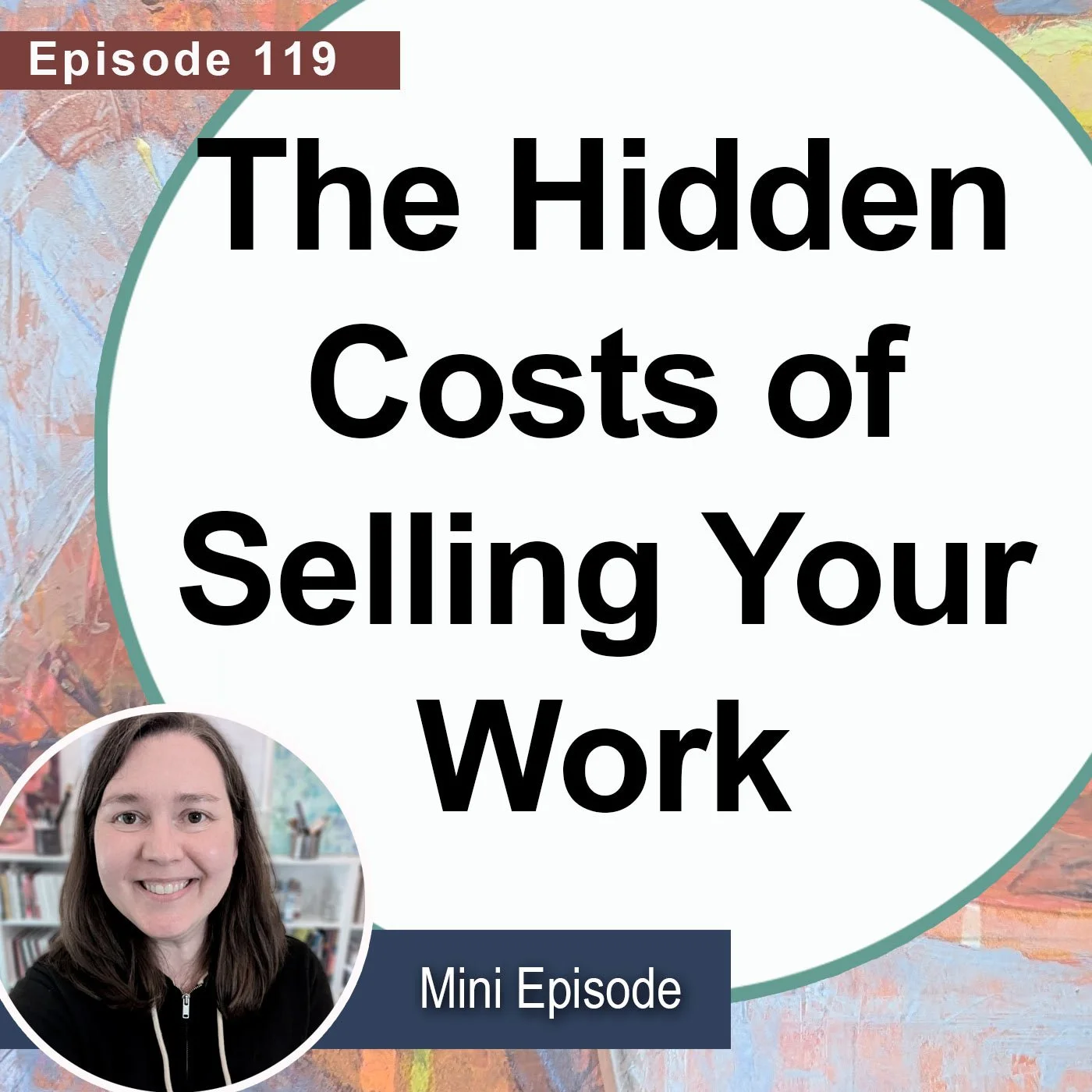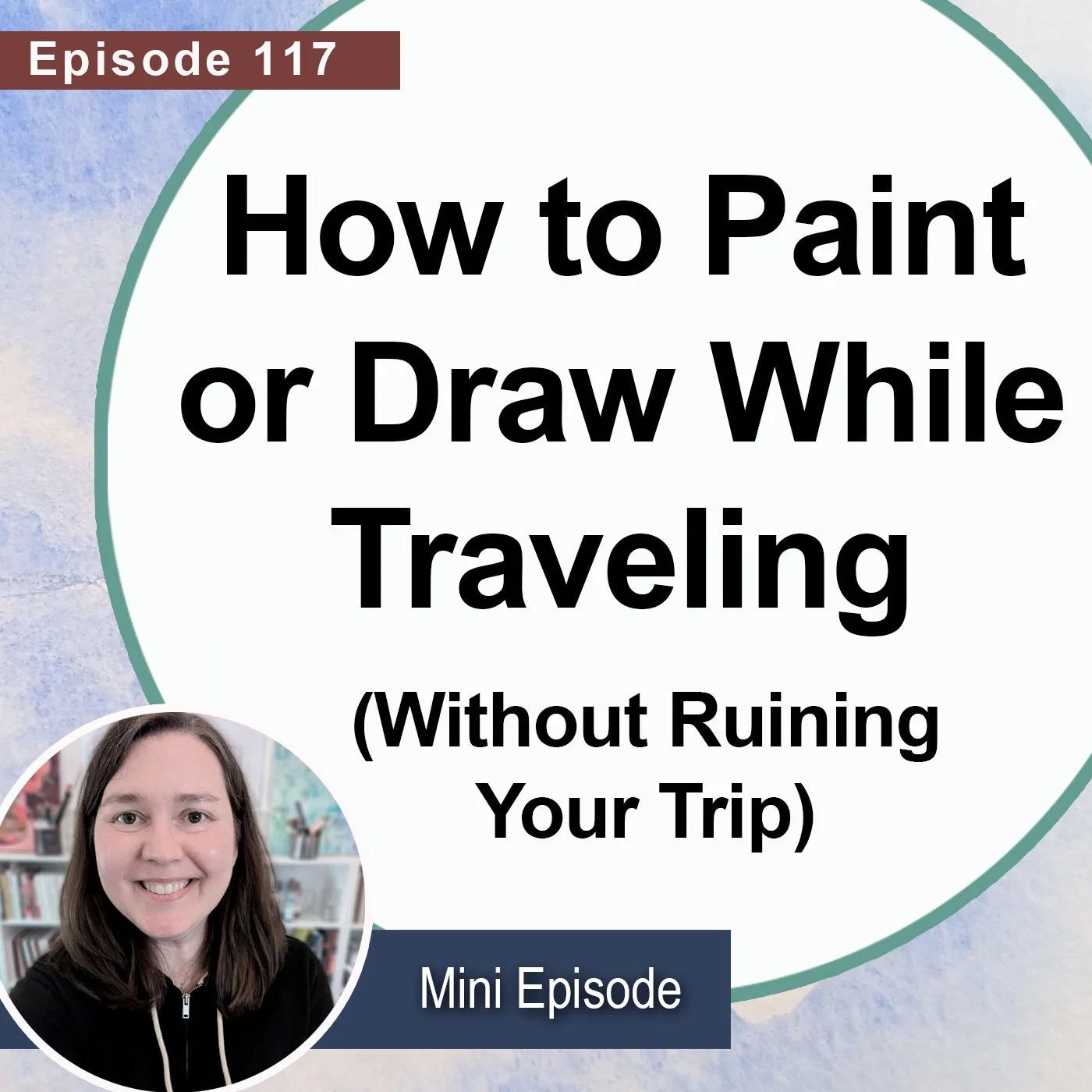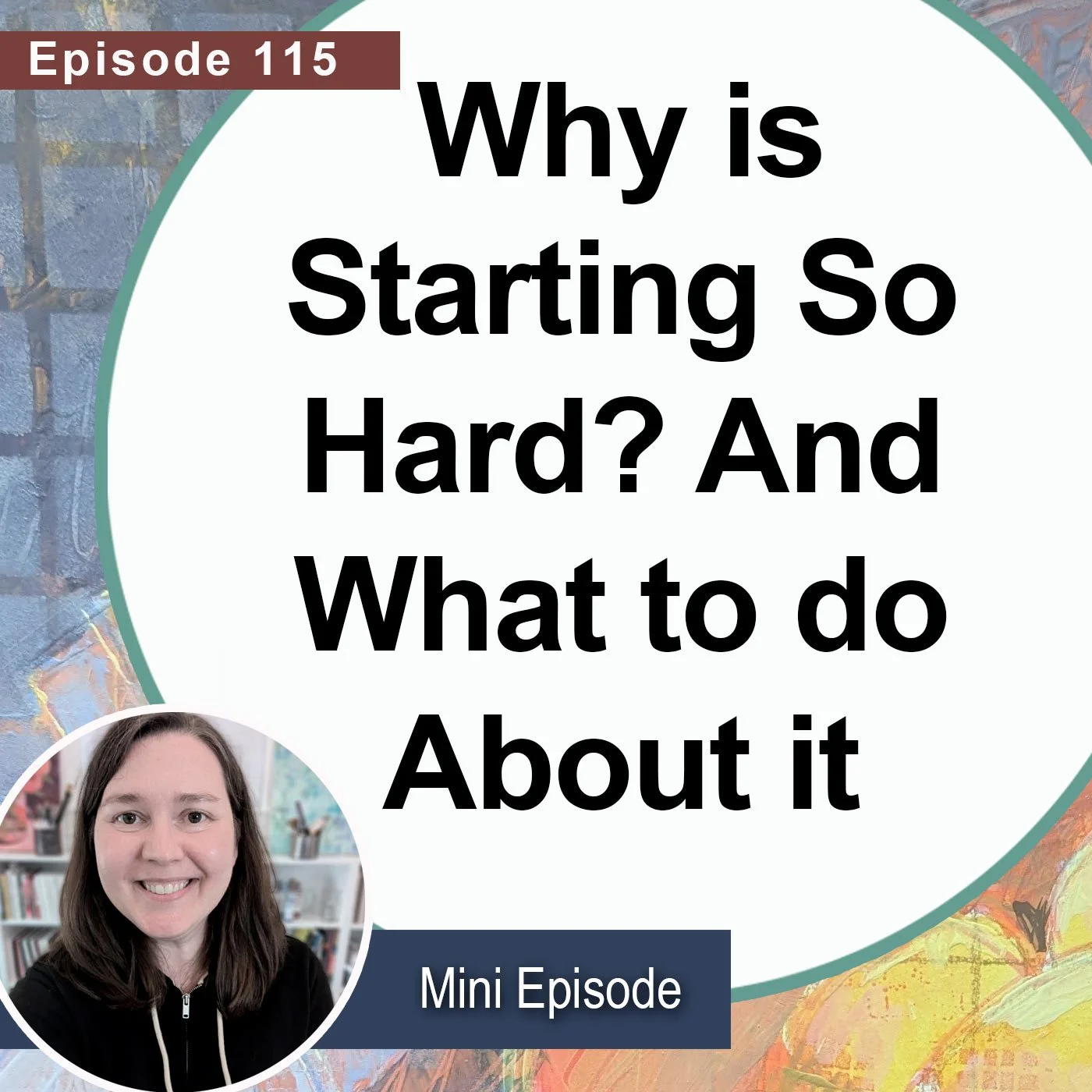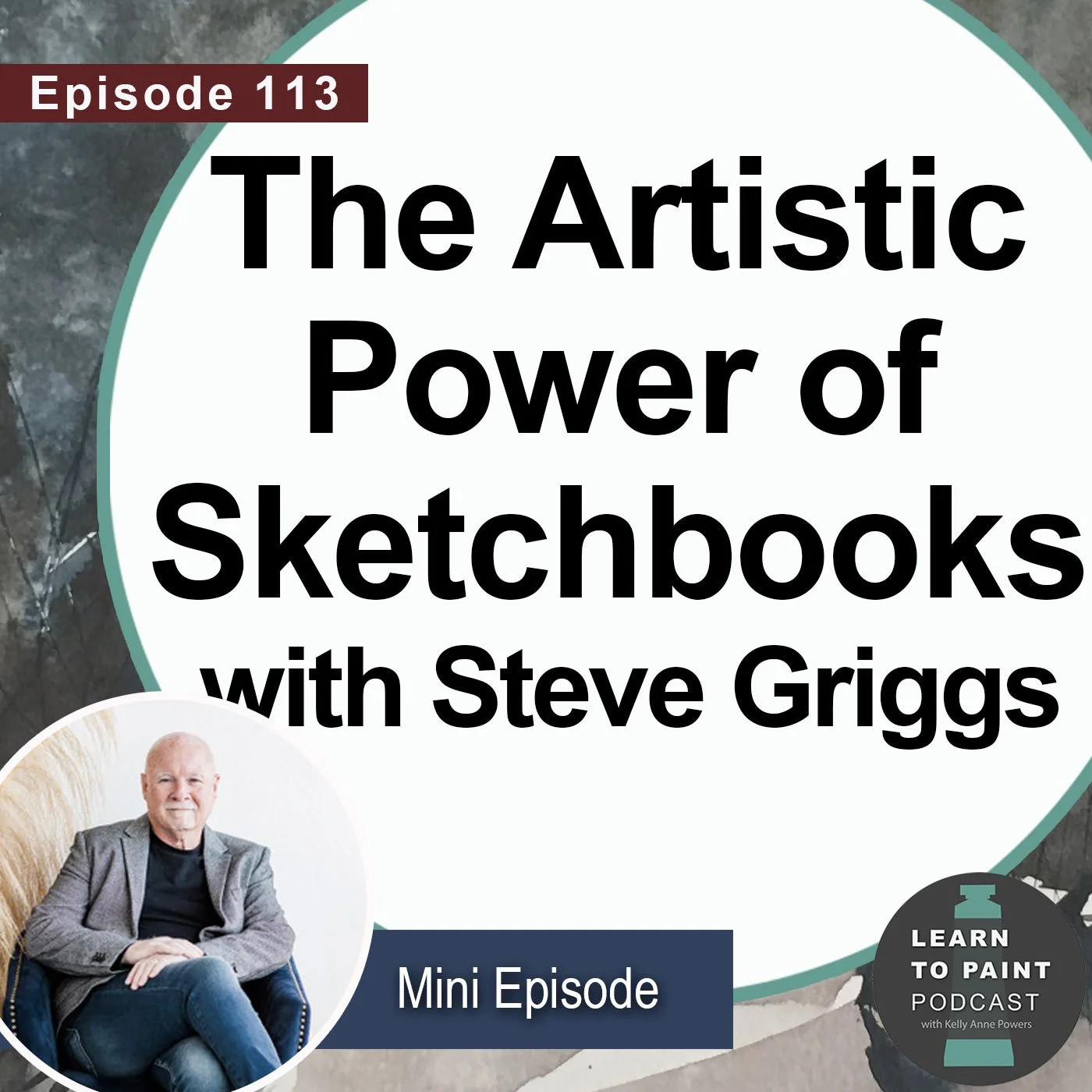How to Paint More: Three Daily Painters Give Advice
Daily painters are a great group to turn to if you’re trying to paint more often.
Why?
Because they’ve figured out how to show up every single day, start and finish a painting.
WHAT IS DAILY PAINTING
It can be a little confusing. Isn’t just daily painting, painting every day?
Yes and no. Many artists commit to showing up and working every single day. For example, when artist Chris Krupinski (Episode 2) decided she wanted to get really good at watercolor, she committed to painting two hours every day no matter what.
Krupinski wasn’t finishing a single painting every day. (I hope not! Her paintings take hundreds of hours each.) But because she wasn’t finishing a painting each and every day, Krupinski wouldn’t fall under the daily painter umbrella.
A daily painter is someone who finishes a complete painting each and every day.
So maybe daily painting is right for you and your life. But also, maybe it’s not right now. Either way, daily painters have some great advice for how to paint more.
WHAT YOU PAINT
If you want to start daily painting or just paint more, it’ll be helpful to figure out what you paint. That isn’t only a question of subjects like people or fruit but also whether or not you work from life or reference photos.
There is no wrong answer, but it may not be as simple as it sounds.
First, there’s the practical standpoint. Your daily painting subject also has to be readily available and easy to access.
When Kim Smith (Ep.13), looked at her schedule, she knew she had limited time each day for painting. The oil painter knew that she had to choose subjects that could fit comfortably into her painting time.
“I couldn’t paint plein air. I couldn’t use life models. I don’t even really have time to set up a still life setting,” she says. So Smith paints from reference photos of which she’s now amassed a huge library.
“I wake up in the morning and I feel inspired by a color or a visual or something, I just go into my library, I pick something out and I paint. So instead of getting lost and thinking about what am I going to paint, what do I want to create? I just create.”
Smith chooses images that are compositionally straightforward: A bird, a flower, a bouquet. She doesn’t want anything big or complex. She saves more complex subjects for her non-daily, larger paintings.
Second, your daily painting subject has to keep you inspired day in and day out. You might like lemons today, but will you still like them 200 lemons later?
This was a struggle for Lisa Daria Kennedy (Ep.14), who today paints flowers from life, but it took the artist over two years to find a subject that would truly work for her.
She tried fruit. She tried paper bags. She saw artists online creating great paintings with subjects that just didn’t interest her. Finally around day 1000 Kennedy realized that cut flowers were a good fit or her. She wanted something that she could spend some time with.
“It wasn’t until I decided to pick something that I could paint for a week that would have it’s own start and stop date... because flowers live, they die, they live, they die.”
Kennedy also gave herself permission to be more representative in her style.
“I'm trying to get this painting done,” says Kennedy of her daily painting. “So part of that is trying to simplify it so I'm not there all day painting…every bit on the baby's breath.”
Debbie Miller (Ep.15), like Smith, has found that photo references are a good fit for her daily painting practice for three reasons.
First, photo references help her see the values in a subject more clearly, which is something she struggles with working from life. Second, her husband, artist Brian Miller, really loves working from life and third, her set up isn’t as easily accommodating to having a still life set up. So Miller sticks happily to photos for her reference.
Miller has organized both the photos she’s taken or has permission to use into Pinterest boards. That way she can walk in with an idea of what she wants to paint but then is also free to change her mind. Inspiration is easily at hand.
Miller also uses 30 day challenges as a way to help guide what she paints. For example, every February she knows she’ll be painting flowers because of Amanda Evanston’s 28 February Flower challenges.
“It's another thing that kind of grounds me and gives me some shape, so I don't have to figure everything out for me. So that's part of the system,” says Miller
Each artist has created a system around their subject matter. They’ve already answered the question “What will I paint today” and if they don’t feel inspired by that particular subject on a given day, they have a system for how to find something that does inspire them. All of this helps them spend less time figuring out what to paint and more time painting.
WHERE YOU PAINT
On paper, setting up and tearing down a space everyday may seem like not that much work. However, doing it day after day often proves too big a barrier to painters. Having a dedicated space is critical when starting and keeping a daily painting practice.
For Smith it’s important to have a space that she can go into to officially start her time. When she’s done with a painting session, she leaves and heads to her day job.
When Kennedy started her daily painting project, she didn’t yet have a studio. So she set up something small that she could leave up permanently. It’s the space she still more or less uses today.
“I set up just a little tiny corner in my kitchen. I paint leaning on a roll of paper towels, I have a little mason jar with the brushes and a little basket with the paints that can stay up every day.”
Originally Miller (and her husband) had their studio set up in their dining room, but the space had to be cleared any time they had guests come over.
“We realized that we were going to do this every day, it had to be easy. It had to be accessible. Things had to be set up in a way that it wasn't taking 20 minutes to get it set up so that you could paint,” says Miller.
Beyond the ease of having a space, Miller found that creating the physical space had an important side effect
“We literally created the physical space, but then that also was just an emotional commitment,” says Miller. “This was a declaration that art is really important.”
SYSTEMS MATTER
When you’re working every day, systems really do matter.
Each of the three artists paints on the same size and shape of substrate every single day. That streamlines many of the decisions the artists have to make about composition and subject. For example, Miller is always thinking about whether or not something will work in a square.
Similarly, Kennedy cuts her flowers short and uses stemless wine glasses as vases, keeping her small square format also in mind.
Each artist makes sure to lay out their paints (all somewhat limited palettes) on their palette each time so they know exactly where to reach when searching for a particular color.
They each leave their setups the same each day. For example, Kennedy leaves her brushes in a small amount of water to clean up as part of the next day’s ritual.
Meanwhile Smith makes sure to clean hers.
”Before I end my day, I make sure my brushes are clean and ready to go,” she says. “So it’s effortless to just go into the studio and create and not have to think about the stuff and that’s a perfect way to start and then there’s no excuses.”
Kennedy realized the cost of cradled boards would add up and that their physical depth would take up too much storage space. So she switched to panels.
Miller meanwhile has found cradled boards exactly what she needs because she can paint the edges black and they are ready to hang. But she makes sure to batch preps her substrate. Once a month she and her husband paint dozens of boards with their red undercoat so they can grab them and go come morning.
Each artist was constantly looking for ways to make the process easier.
“Everything I did that was a little bit easier thing I did before I was like, Oh yeah, that's gonna be the new norm,” says Miller.
Again, remember, these systems from the depth of board to where you place your paints, they add up over showing up every day and painting.
SET LIMITATIONS
If you want to start a daily painting practice, you might consider setting limitations.
One of the limitations Kennedy, Miller and Smith set are size. Each works relatively small for their daily painting work. Miller and Kennedy work 6x6. (Kennedy goes down to 3x3 when she travels.) Smith works primarily on 6x6 or 6x8” and has gone down to as small as 4x4 for a series.
(Side note: Kennedy and Smith have larger paintings they work on. But they are different from their daily painting practice.)
Part of the goal for all of these painters is to FINISH the painting. That is part of the goal. So working small is critical in
The artists have set additional limitations as well. All three limit the colors on their palettes. They also all work a la prima, which means they finish the painting in one setting.
Another way they set limitations is by the time. Each starts more or less at the same time every day and more or less works for the same amount of time.
All of these limitations lower the amount of problem solving they each have to do when they come to painting for the day. It streamlines the process as much as possible and saves the energy and creative problem solving for where they want it: the paintings themselves.
WHY IT WORKS
There’s a reason why each of these artists keeps coming back to daily painting.
For Kennedy, it helped create the mindset and momentum that helps her with her larger studio practice.
“It provides this sort of a sense of calm,” she says. “I work on bigger paintings in the studio during the rest of the day and I can't always get in there every single day...But with the daily painting project, I'm always making time for that so I really can go into the studio and pick up a brush after a week or two and not feel like I have to start from zero again.”
For Smith it’s about getting lost in something she loves.
“It's just my calm before the chaos of the day. It's just my space,” she says. “It's kind of like a meditation to me. I go to my studio, nothing else matters except what I'm creating.”
For Miller it’s about starting her day with prayer and intention.
“It's sort of like praying with color,” says Miller. “I get to engage with beauty. And I get to start my day with a sense of intention. And so to me, it's very much like prayer, but prayer in motion, and it connects me with something bigger than myself. And for me, that's really powerful.”
GIVE IT A TRY
If you think daily painting is the right commitment for you and your art, give it a try.
Kennedy suggests setting a time limit and then slowly building up your painting speed.
“What you can do is you, “I have an hour of time,” and you can start a painting and end it in an hour. And then the next day paint for an hour. And then maybe after three days, you'd have a painting,” she says.
Kennedy also reminds students that it’s important to problem solve along the way. The first attempt won’t always work. (Like it didn’t for her.)
“Whatever kind of obstacles you have,” she says, “you have to work around them and find a way to make it work for yourself.”
Smith suggests keeping it all in perspective.
“Know that no matter what you do, you'll have nothing to lose. It's just a painting. If you hate it, then start over. It's not brain surgery. ..It's just a painting. So be loose. Enjoy the journey.”
Miller reminds us that while we may try and fail a few times it doesn’t matter.
“The main thing is to figure out what works for you. And anything that can get you painting more regularly is going to be such a gift,” she says. “And if you can say, “Well, I may not be painting every day, but I'm painting more than I used to.” Well, that's victory.”
Get more articles sent straight to your inbox. Add your name to the newsletter list below!



